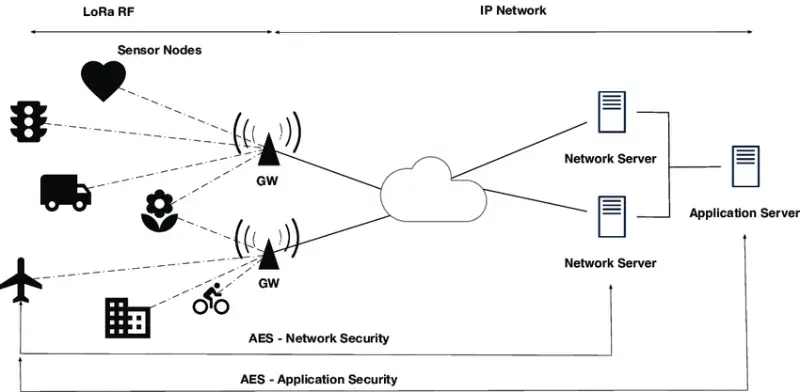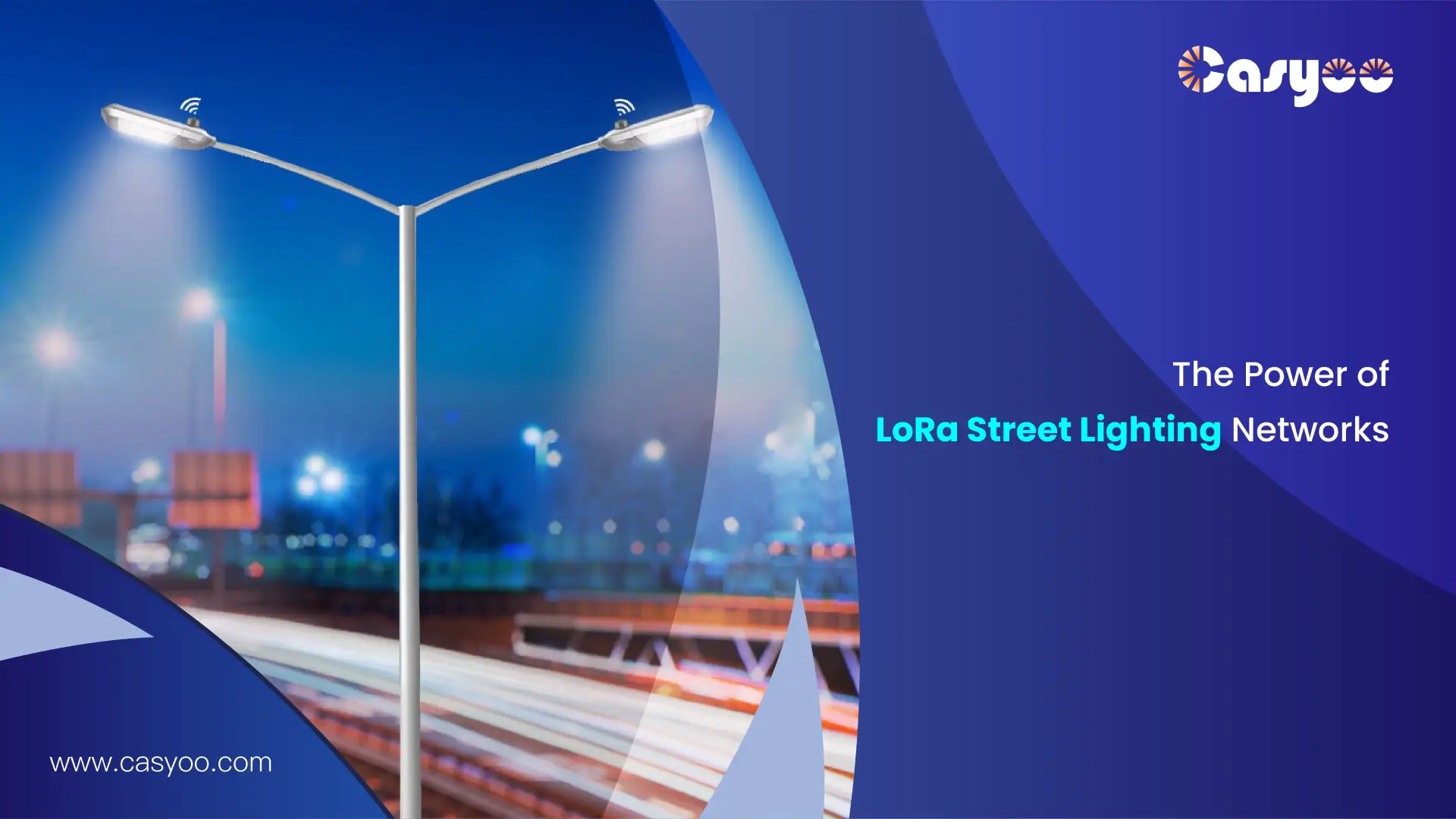Outdated street lights are costing cities millions of dollars. However, a revolution is under way as LoRa street lighting turns conventional lamp posts into intelligent networks that reduce maintenance hassles and energy expenses. These smart lights are becoming the cornerstone of the smart cities of the future; they do more than just light up the streets.
Lora street lighting and its benefits
Understanding Long Range Communication
Long Range, or LoRa for short, is a technological advance in wireless communication. The technology uses about the same amount of power as a typical TV remote control and can send messages over whole towns. A single gateway is perfect for citywide lighting networks because it can cover an area of many square kilometers.
Power Efficiency Benefits
Field tests continuously show how energy-efficient LoRa-enabled street lighting are. Test deployments usually demonstrate negligible power consumption and operational lifespans of several years. For municipalities, this efficiency directly results in lower operating expenses.
Cost-Effective Implementation
Compared to conventional networking systems, LoRa implementation necessitates substantially less infrastructure. With just a few carefully positioned gateways, LoRa networks can usually cover entire districts, whereas traditional systems frequently require substantial hardware deployments.
Scalability Advantages
Scalability has become a significant benefit in real-world applications. Successful network expansions from hundreds to thousands of lights without requiring major infrastructure changes are demonstrated by municipal case studies, highlighting the inherent flexibility of LoRa.
LoRa vs. Zigbee: A Technical Comparison
Frequency and Range Differences
One of the most important choices for smart lighting installations is between LoRa and Zigbee technologies. Their working frequencies—LoRa’s sub-GHz range and Zigbee’s 2.4 GHz spectrum—are the fundamental source of their differences. Significant differences in their real-world performance characteristics are caused by this basic difference.
One of the main benefits of LoRa is revealed by signal penetration through urban infrastructure. LoRa signals, which operate in the lower frequency band, are far less attenuated when they go over urban impediments like buildings. Compared to Zigbee’s higher frequency transmissions, LoRa signals penetrate walls 5–10 dB better, providing more dependable coverage in crowded metropolitan areas.
Signal Performance and Range
In urban deployments, these technologies’ range capabilities exhibit notable variations. LoRa maintains dependable connectivity up to 15 kilometers in identical circumstances, but Zigbee links usually hit their limits at 300 meters. LoRa’s strong modulation technique and advanced signal processing are responsible for this remarkable range.
One major technical advantage of LoRa systems is their superior link budget. With an average link budget of 157 dB, LoRa provides far greater headroom for dependable communications than Zigbee, which has a budget of 120 dB. With a remarkable sensitivity of -137 dBm, the receiver can pick up very weak signals that Zigbee systems would miss.
In urban settings, LoRa’s chirp spread spectrum modulation works especially well. Even in places where there are a lot of other wireless signals, the technology maintains dependable connections thanks to its exceptional resistance to interference. In difficult RF situations, this durability is essential for preserving reliable street light control.
Power Management and Efficiency
These technologies differ significantly in terms of battery life and power efficiency. LoRa-enabled devices use advanced sleep mode management to achieve remarkable power economy. During idle times, the system usually uses less than one microamp, only momentarily waking up to perform control or communication tasks.
The power benefit goes beyond just being more efficient in sleep mode. Transmission power is automatically optimized by LoRa’s adaptive data rate capability according to signal conditions. Reliable communications are maintained with minimal power usage thanks to this dynamic adjustment. Long-term research shows that battery life can reach 5–10 years, which is far longer than Zigbee’s usual 1-2 year battery replacement cycle.
Network Architecture Innovations
An other area where LoRa shows notable benefits is network topology. LoRa uses a more straightforward and effective star-of-stars topology than Zigbee’s mesh architecture, which necessitates intricate routing and numerous message hops. The complexity and power overhead of routing messages through several nodes are removed by this architecture.
LoRa networks provide a significantly higher capacity than conventional options. Zigbee coordinators usually support a few hundred devices, however a single LoRa gateway can effectively manage up to 62,500 nodes. Thanks to LoRa’s advanced spread spectrum and channel access strategies, this enormous scale is made possible.
| Feature | LoRa | Zigbee |
| Operating Frequency | Sub-GHz band (868MHz in Europe, 915MHz in North America) | 2.4GHz |
| Transmission Range | Up to 15km in urban environments | 100-300 meters |
| Wall Penetration | 5-10dB less path loss compared to 2.4GHz signals | Poor, significant attenuation through obstacles |
| Link Budget | 157 dB | 120 dB |
| Receiver Sensitivity | -137 dBm | -100 dBm |
| Modulation | Chirp Spread Spectrum (CSS) | Direct Sequence Spread Spectrum (DSSS) |
| Interference Resistance | Strong resistance to wireless interference in urban environments | Moderate, susceptible to 2.4GHz band interference |
| Sleep Mode Power Consumption | <1µA | Higher |
| Wake-up Time | <50ms | Longer |
| Transmission Power Range | 0-20 dBm, dynamically adjustable | Fixed power, limited adjustment range |
| Battery Life | 5-10 years | 1-2 years |
| Network Topology | Star of Stars | Mesh |
| Nodes per Gateway | Up to 62,500 nodes | Several hundred nodes |
| MAC Layer Characteristics | Class A operation, devices can sleep for extended periods | Requires frequent communication, higher average power consumption |
| Network Complexity | Simple, no multi-hop routing required | Complex, requires routing configuration |
| Protocol Overhead | Low | Higher, requires routing table maintenance |
| Application Suitability | Ideal for wide-area, low-power, low-data-rate scenarios | Suitable for small-area, high-frequency communication scenarios |
| Deployment Cost | Lower, minimal infrastructure requirements | Higher, requires more relay nodes |
| Maintenance Requirements | Simple, long device lifetime | More complex, requires regular battery replacement |
System Architecture
Edge Layer Components
A four-layer architecture is commonly used in contemporary LoRa-enabled lighting systems. Smart sensors and controllers at the edge level keep an eye on a number of variables, such as energy usage and light output. These parts work in tandem with LED lighting fixtures to gather environmental and performance data in real time.
Gateway Infrastructure
The second layer consists of LoRa gateways, which connect individual lights to the broader network. Cities require only three to five strategically placed gateways to get full coverage, demonstrating LoRa’s amazing range capabilities.
Network Server Functionality
Data security and communication management are handled by the network server layer. Millions of messages are routinely processed every day by current systems while ensuring dependable command delivery and network efficiency.
Cloud Management Platform
The analytical core of the system is represented by cloud platform management. These solutions optimize energy use, maintenance schedules, and illumination levels using sophisticated algorithms. After putting such systems in place, case studies from large cities show energy savings of 60–70%.

Enhanced LED Capabilities
Smart Control Features
Ordinary LED street lights can be converted into smart city network nodes using LoRa technology. Modern control systems are able to automatically modify lighting in response to a variety of variables, including ambient light levels, traffic patterns, and weather.
Remote Monitoring Advantages
Another important development is the evolution of maintenance practices via remote monitoring. Contemporary technologies offer real-time condition information for every network light, eliminating the need for citizen reports or regular inspections.
Smart City Integration
These advantages are increased through integration with larger smart city systems. Modern LoRa-enabled lights are used to gather information on a range of urban metrics, including noise levels, air quality, and traffic patterns.
Energy Optimization
Results from energy optimization capabilities are especially striking. Algorithms for machine learning examine usage trends to modify output appropriately. Cities save 70–80% on energy costs when compared to conventional lighting systems.
Technical Innovations
Protocol Advancements
The performance of the system in smart lighting applications has significantly increased due to recent advancements in the implementation of the LoRa protocol. With response times of less than 100 milliseconds, the most recent protocol stack makes it possible to control lighting fixtures almost instantly. In emergency situations and dynamic lighting applications, when even little delays could compromise public safety, this quick reaction is essential.
Exceptional dependability in urban settings is now guaranteed by sophisticated mistake correction systems. Even in regions with high levels of radio frequency interference, contemporary implementations routinely achieve packet delivery rates above 99.9%. Advanced forward error correction algorithms and adaptive data rate selection, which automatically optimize transmission parameters based on signal conditions, are the sources of this dependability.
Performance Optimization
LoRa-enabled lighting systems’ battery efficiency keeps improving thanks to advanced power management strategies. The most recent implementations use dynamic power scaling, which modifies transmission strength according on signal quality and distance. Some installations now report operational lifespans surpassing ten years, demonstrating how this adaptive technique greatly increases battery life while preserving dependable communications.
Advanced channel access techniques have resulted in significant gains to network capacity. Current systems use various spreading factors to enable simultaneous transmission across several channels. This advanced method allows for dense deployments in urban settings by optimizing network speed while reducing device interference.
Integration with Emerging Technologies
Smart lighting systems have intriguing new possibilities thanks to the convergence of LoRa with cutting-edge technologies like 5G and Wi-Fi 6. Hybrid networking solutions combine high-bandwidth local networks with LoRa’s long-range capabilities to support complex applications such as environmental monitoring and video surveillance. This method works well when applications require both broad coverage and great data throughput.
Another advancement in smart lighting control is the incorporation of artificial intelligence. To improve lighting schedules, machine learning algorithms examine past trends in energy use, traffic movement, and weather. By continuously learning and adapting, these systems increase efficiency while preserving the ideal levels of illumination for public safety.
Applications and Use Cases
Emergency Response Systems
Beyond just providing basic illumination, LoRa-enabled street lights are incredibly versatile. These systems’ ability to automatically modify lights to direct first responders is exemplified by emergency response applications.
Environmental Monitoring
Cities can use integrated sensors to monitor temperature, humidity, and air quality thanks to environmental monitoring capabilities.
Commercial Applications
Implementations in commercial districts demonstrate how adaptive lighting may react to business hours and foot traffic patterns. These technologies preserve or enhance illumination quality while reducing energy use by 40–50%.
Conclusion
Urban infrastructure management is being revolutionized by LoRa-powered smart street lighting. Its demonstrated advantages include strong environmental monitoring capabilities, considerable energy savings, and accurate lighting management. According to industry data, cities that install these systems usually reduce energy use by 70–80% while improving service quality and public safety.These technologies will be essential for emergency response, autonomous vehicle support, and urban data analytics as cities develop. Are you prepared to revamp the lighting system in your city? With Casyoo’s LoRa-compatible street lights, you can completely change your city. Get a free consultation right now.




